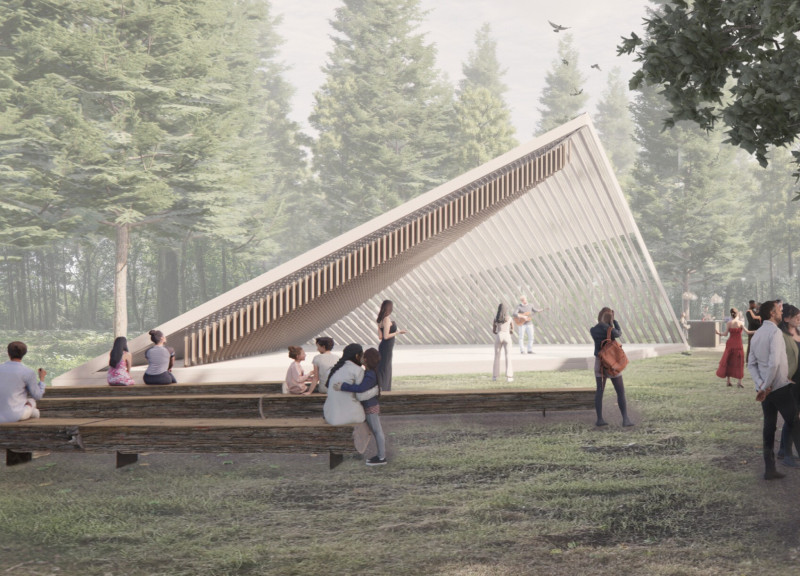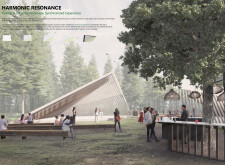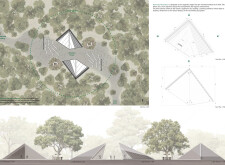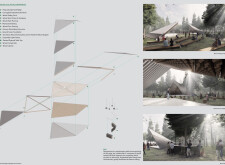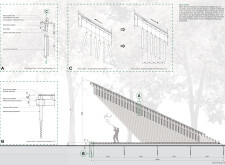5 key facts about this project
## Project Overview
The architectural design focuses on a festival environment, specifically the Samusi Festival, integrating elements of historic Latvian wooden architecture with contemporary techniques. The intent is to create a communal space that engages visitors through auditory and visual experiences while harmonizing with the natural setting. The design emphasizes an inclusive atmosphere where the surrounding landscape and cultural heritage are focal points.
## Materiality and Sustainability
The primary use of wood throughout the structure underscores a commitment to sustainability and connection to the environment. Materials such as polycarbonate panels enhance natural light infiltration and protect against the elements, serving both functional and aesthetic purposes. The selection of sustainably sourced wood not only aligns with green building practices but also enhances the tactile and visual experience of the space, fostering a sense of belonging among visitors.
## Spatial Configuration and User Engagement
The layout consists of two performance stages positioned in relation to each other, allowing for flexibility in the arrangement of community gatherings, from intimate group discussions to larger events. Features such as integrated wind chimes interact with the environment, enriching the acoustic experience as they respond to natural airflow. Seating elements crafted from local materials, including tree trunks and halved logs, provide a tactile connection to the site's resources, enhancing the visitor experience. The design prioritizes large open spaces that blend seamlessly with the forest, reflecting natural forms and minimizing disruption to existing flora.


